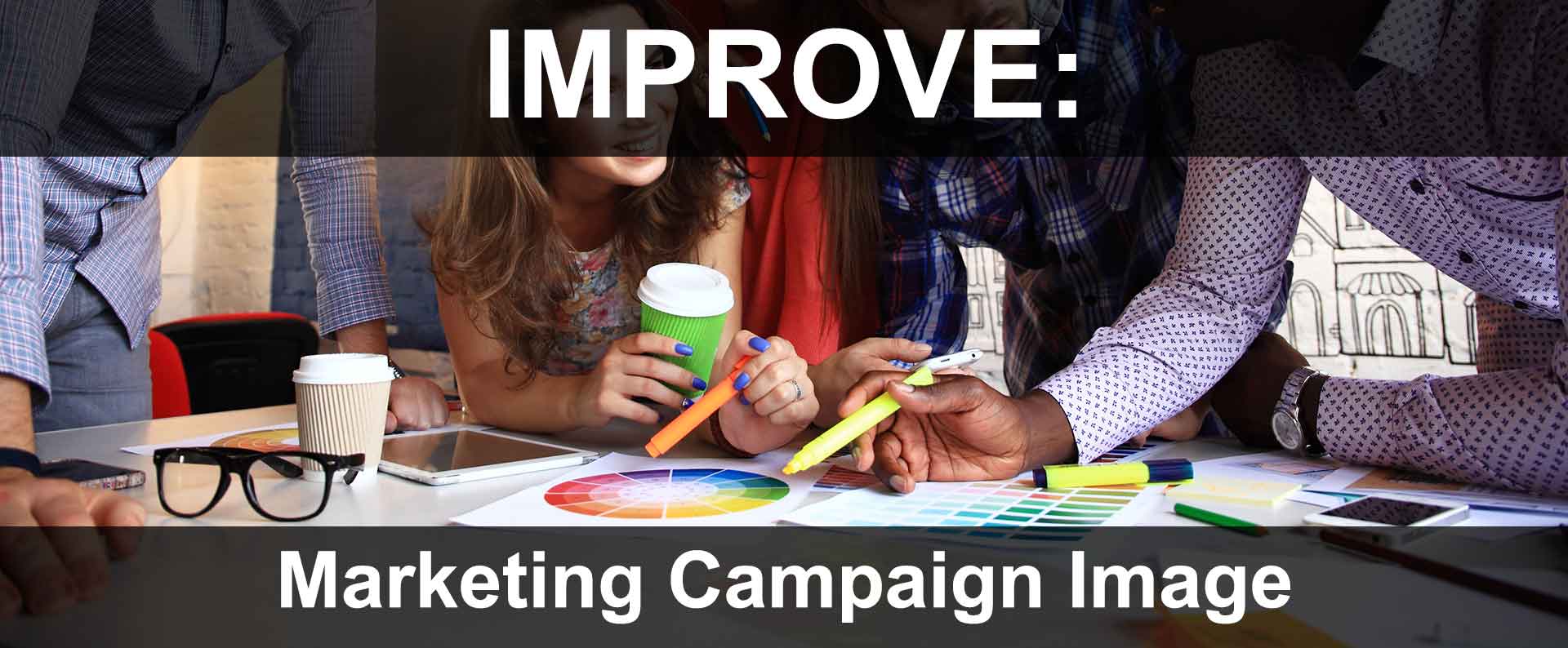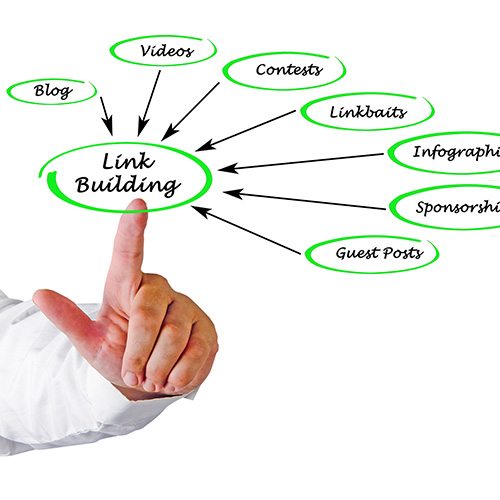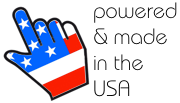- What image does a company's marketing portray to the public?
- What comes to a person's mind when they think of a business, or see their advertising?
- How does one want the public to view the company?
While building a comprehensive brand to uniquely identify a business in the market place is of paramount importance; massaging and building that brand into an image that clearly communicates how the business will help fulfill consumer needs, is of equal importance.
A brand identity is set by the business in what they want to portray.
A brand image is what is perceived by the consumer.
The campaign image should:
- build upon the brand
- reflect the brand
- incite emotional appeal
Developing an effective, yet positive marketing campaign image requires a good deal of thought, research, and overall consistency.
The campaign helps to define how customers perceive the company.
With this in mind, it's obvious why all marketing collateral, both online and offline (a website's image, related social medias, print, and overall marketing campaign) needs to be well thought-out and implemented:
- The image will embellish upon, and help solidify an established brand.
- A successful marketing campaign will appeal to customers, and create a desire to do business; whether online, offline, or in-person.
- On the opposite side, a poor campaign image, at best, will leave customers feeling nothing; apathetic about the company.
- At worst, a poor campaign may drive prospects away, with no desire to do business with the company ever again!
Every industry is different. Even the needs of companies within the same industry may vary.
However, regardless of industry, there are three basic principles that apply, and are essential for developing an effective campaign image:
Keep It Clear & Concise
First, regardless of medium, a campaign image must be clear, concise, and easily understood.
- The campaign must answer the basic questions of WHO, WHAT, WHERE, WHEN, WHY & HOW.
- Vague or innocuous statements should be avoided.
- There should be no doubt as to:
- Who is advertising?
- Establish the brand and image the company wants to portray.
- What is being advertised?
- Clearly identify the products, services, or information available.
- Where can it be obtained?
- Instruct where a user can gain access to the products, services, or information.
- When is this available or valid?
- Discuss the timeline and availability, emphasize any time-sensitive information.
- Why choose this business?
- Describe why the product, information, or service is better than the competition; why should someone purchase or use this company, versus various competitors?
- How will this benefit the buyer?
- Engage by describing exactly how features will benefit the consumer, and what's in it for them.
- If there is any part of the product, information, or service that does not clearly identify a purpose, then give an explicit description so the consumer understands.
Never leave it to chance that the customer will know and understand how to proceed or obtain the product, information, or service. - Another common area of confusion used in a campaign is the use of industry specific words, or jargon:
- Too often, businesses will use industry related jargon or words in advertising that prospects may not understand the meaning of.
- While industry jargon is important for development of keywords and related phrases, it's imperative that this jargon be clarified throughout the campaign for the consumer's sake.
- If visitors don't understand what is being talking about, then more than likely the prospect will not commit to buying.
- A prospect must clearly see how they will benefit from using a company's product, information, or service versus the competition's.
- Too often campaigns focus on the features, and fail to mention specifically how those "features" translate into actual benefits for the consumer (what's in it for them).
For example:
"Product XYZ has lots of great features, but how will those features make my life or work easier? What's in it for me? How do they solve my problem?"
Getting a clear understanding about the product, information, or service should be the main goal of any particular campaign:
- Don't confuse the message with mentioning irrelevant issues or ideas.
- Stick to one main theme per campaign or ad.
- If there are multiple ideas to get across, then look at developing multiple campaigns, one for each idea.
Use An Emotion Appeal
An effective marketing campaign will pull customers in with an emotional appeal they relate to and can't avoid engaging with.
There are numerous ways to appeal to peoples' emotions.
These methods can include addressing common fears or joys, utilizing images or colors, music & sound, etc.
Some marketing campaigns may use an emotional appeal based on human biases, or other psychological factors, to gain a potential client's interest.
For example:
- An effective example of emotional appeal is seen when a charitable organization shows images of the people they sponsor, and assist in distressing situations.
- This appeals to the viewers emotions, and often creates the feeling that the viewer needs to reach out and help. They can fulfill that need to help by donating to the cause in question.
Another method of appealing to peoples' emotions is by using color. Using color as an emotional appeal is extremely effective; it plays on some of the most basic psychological instincts.
For example:
- Red is a color known to create the feeling of anger or rage.
- As well, bright colors are known to create a sense of excitement and fun.
- A website for games may want to use bright colors in their ads to assist in creating the appeal of fun and excitement.
Using fonts and varying font weights can generate an emotional appeal.
- Fonts similar to natural handwriting can make an advertisement seem more personal.
- A standard Arial font might appear more stoic and corporate.
- A bolded word or phrase can make a statement by standing out from the rest.
Social media sites such as Facebook, Twitter, LinkedIN & Alignable (local business social network) are an important method of appealing to the consumer emotion of "the need for inclusion".
- When one customer sees another friend or family member has "posted" or "liked" or "tweeted" about a particular product or service, others are more likely to follow so as to be included in the discussion.
- Many of the social media sites give the opportunity for businesses to post "feeds" on the company website showing what others are saying about the company's products and services.
- Adding social media is an important way of building an image or marketing campaign. In today's world it should be a requirement for securing a brand across all possible platforms.
There are many other ways to emotionally evoke prospects to make a buying decision. A successful company will research and find out what makes their target market tick, and what emotions will trigger them to "buy". Such research and information is priceless in regards to a company's success, online or offline.
Be Consistent
Being consistent with all branding of corporate image and marketing campaigns is a huge factor that can greatly affect the overall success and effectiveness of an online or offline marketing campaign; in the long-run, consistency can help with the company's success.
- Regardless of the medium used for a marketing campaign, the overall look or style should be consistent across campaigns incorporating the brand identity.
- Once a company has developed its own color scheme, logo and image, these aspects should be utilized in ALL forms of advertising and marketing to enhance and build upon the brand, both online and offline.
- Any differences should be complimentary or present a wanted difference that engages, not detracts, from any additional marketing.
Wrapping It Up
To briefly summarize, a successful online or offline marketing campaign image will be clear, concise, and easily understood. The campaign will appeal to an emotion, and be consistent with the company's image and brand, regardless of medium.













